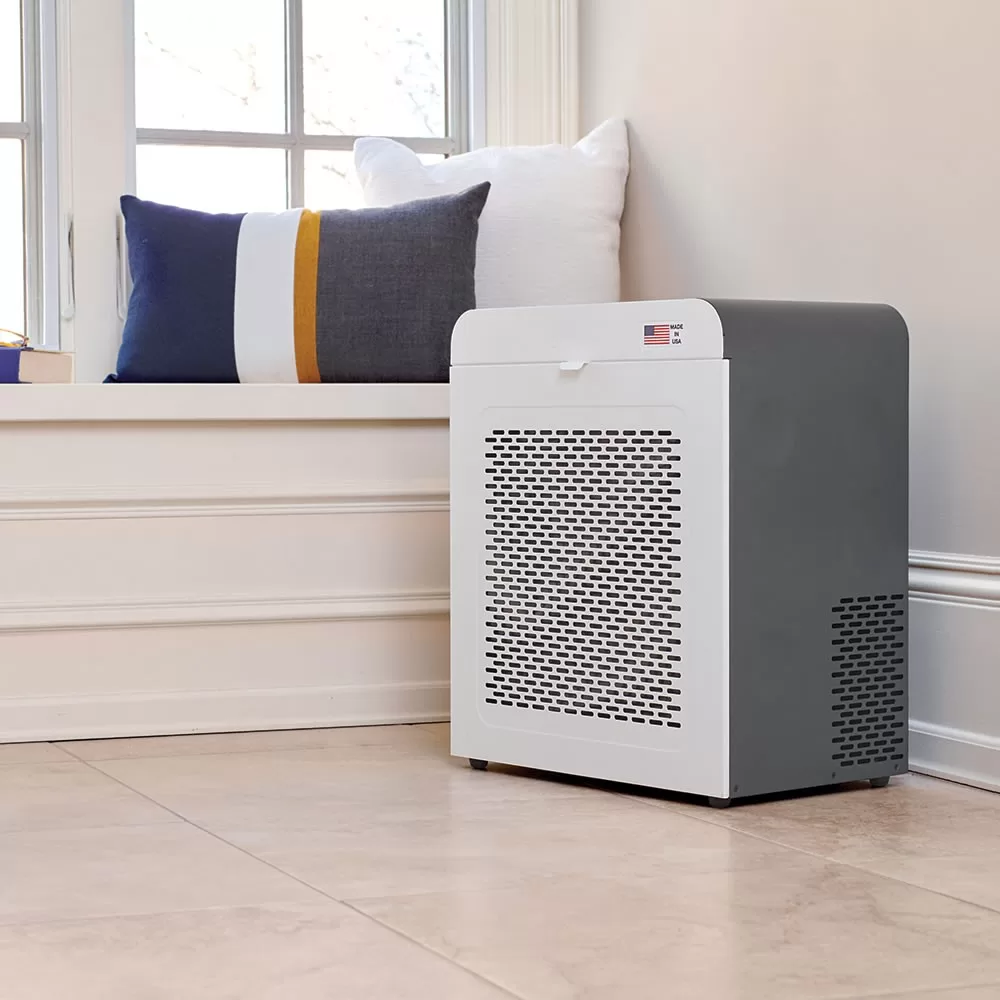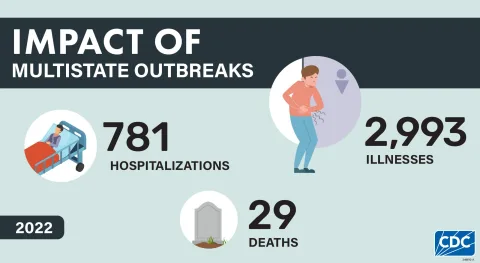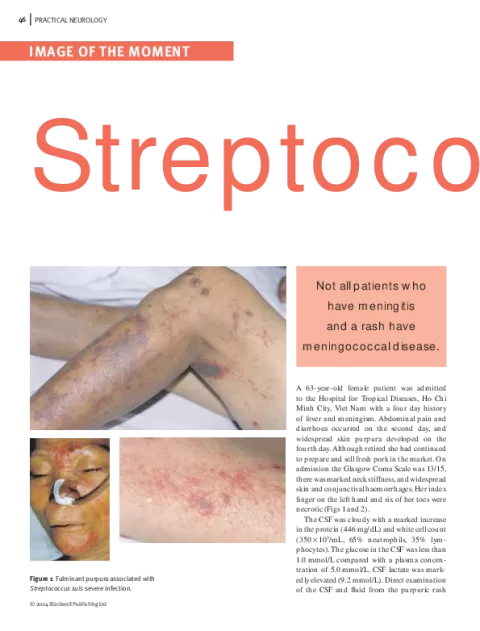Hospital air cleaners play a crucial role in maintaining healthy environments within medical facilities, particularly in the face of airborne viruses. Recent research from University College London has illuminated the complex interactions between these cleaning systems, aerosol spread, and virus transmission. While portable air cleaners (PACs) and advanced hospital ventilation systems aim to reduce airborne pathogens, they can, paradoxically, contribute to increased aerosol migration under certain conditions. For instance, findings revealed that ineffective placement of air cleaning devices can lead to heightened spread in neighboring rooms. Understanding these dynamics is vital for improving infection control measures in hospitals, ensuring both patients and staff remain safe from the unseen threats lurking in the air.
Air purification systems, often referred to as air cleaners or filtration units, have become increasingly significant in the realm of healthcare. These devices, including portable air cleaners and robust ventilation systems, are designed to combat the transmission of viruses through aerosols in hospital settings. However, new insights suggest that their effectiveness can vary dramatically based on their location and the surrounding air currents. In some cases, the installation of these cleaners has inadvertently amplified the movement of infectious particles. Therefore, as hospitals continue to enhance their air quality measures, recognizing the intricate relationship between air flow and pathogen spread becomes essential for effective infection prevention.
The Impact of Hospital Air Cleaners on Virus Transmission
Hospital air cleaners, particularly portable air cleaners (PACs), have been introduced as a solution to reduce virus transmission in healthcare settings. However, recent research indicates that while these devices can effectively lower airborne particles in certain scenarios, they can inadvertently contribute to the spread of aerosols in adjacent areas. The study conducted at University College London highlights this paradox, revealing that aerosolized particles were sometimes repelled into neighboring rooms due to the mechanics of air exhaust. These findings suggest that the effectiveness of PACs is not uniform and may depend heavily on room configurations, ventilation systems, and even the layout of hospital departments.
Furthermore, the potential for increased aerosol migration can lead to heightened risks for healthcare workers and patients alike. With the ongoing challenges posed by airborne pathogens, understanding the delicate interplay between hospital air cleaners and mechanical ventilation systems is crucial. The management of air flow and particle dispersion in hospitals must be optimized to protect susceptible populations, making it imperative for medical facilities to evaluate their current systems and implement adaptive strategies that could mitigate unwanted aerosol spread.
Challenges of Aerosol Spread in Healthcare Environments
Aerosol spread presents a significant challenge within healthcare environments, particularly in older hospitals that may lack modern ventilation systems. The findings from the research at UCL underscore that air currents are often unpredictable, complicating the use of air cleaning technologies. In many cases, mechanical ventilation systems, though designed to improve air quality, can also contribute to aerosol redistribution, complicating efforts to contain airborne viruses within confined spaces. This situation highlights the necessity for hospitals to rethink their ventilation strategies and consider more advanced air cleaning solutions that account for the unique aspects of their infrastructure.
Moreover, the complexities of aerosol dynamics demonstrated by the study shed light on the importance of continuous monitoring and adjustment of hospital air quality management practices. As healthcare settings strive to maintain patient and staff safety, the variability in air movement necessitates a customized approach that measures how different models of mechanical ventilation and air cleaning systems interact within specific hospital layouts. Employing a diverse range of air purification technologies, alongside diligent engineering evaluations, could enhance protective measures against viral transmissions.
The Role of Mechanical Ventilation in Hospital Settings
Mechanical ventilation plays a critical role in managing air quality within hospital settings, especially during viral outbreaks. By regulating airflow and filtering particulate matter, these systems are designed to mitigate the risk of airborne pathogens. However, the recent study has brought to light the notion that even well-designed ventilation systems can exhibit behaviors that exacerbate aerosol spread if not properly implemented. As hospitals adjust their ventilation protocols post-COVID-19, understanding the intricacies of these systems becomes paramount to ensure the safety of patients and staff.
Additionally, integrating portable air cleaners into existing mechanical ventilation frameworks may require a more strategic approach to offset potential downsides. The research findings suggest that simply introducing PACs is not sufficient; instead, hospitals must align their mechanical ventilation strategies with their goals for infection control. Optimizing airflow patterns, enhancing filtration mechanisms, and maintaining appropriate air exchange rates could dramatically improve the efficacy of these systems in safeguarding health, particularly in areas with high patient turnover.
Considerations for Air Quality Management During Pandemics
In the wake of recent pandemics, air quality management has taken on newfound significance within healthcare facilities. Hospitals are now under increased pressure to ensure that their air cleaning technologies can effectively combat the spread of viruses. This involves not only investing in hospital air cleaners but also assessing their integration with existing mechanical ventilation systems. The dual role of these devices in filtering air while still maintaining comfortable environments for patients and staff must be diligently balanced.
As the environment becomes more stringent regarding air quality, it is crucial for healthcare leaders to adopt comprehensive air management strategies. This includes conducting thorough assessments of how air flows in different hospital zones and making data-driven adjustments to air cleaning technologies. Adopting a coordinated approach that combines HVAC system upgrades with the latest portable air cleaners could significantly reduce risks associated with airborne virus transmission, ultimately fostering safer healing environments.
Evaluating the Effectiveness of Portable Air Cleaners in Clinical Areas
Portable air cleaners have become a common fixture in clinical areas, touted for their ability to provide supplementary air purification. However, their effectiveness is contingent upon various factors, including placement, type of air cleaner, and building design. The insights gathered from UCL’s research reveal that while PACs can reduce airborne particles in immediate proximity, they may inadvertently facilitate the spread of particles to adjacent areas. This underscores the need for careful evaluation of PAC use within clinical settings to ensure they do not unintentionally compromise infection control efforts.
Moreover, it is essential for healthcare facilities to select the right type of portable air cleaner tailored to their specific clinical environments. Factors such as airflow dynamics, the nature of airborne pathogens, and patient vulnerability must inform the selection process. As hospitals aim to enhance overall air quality, a collaborative effort between facility managers and infection control specialists will be vital in establishing protocols that maximize the benefits of portable air cleaners while minimizing potential risks.
Understanding Aerosol Dynamics in Hospital Layouts
Aerosol dynamics within hospital layouts can be profoundly complex, influenced by numerous variables including room size, ceiling height, and even the behavior of people within the space. The recent findings emphasize how unexpected patterns of aerosol movement can arise, particularly when mechanical ventilation and portable air cleaners are in use. Thus, hospitals must not only focus on the technology itself but also consider the spatial dynamics of their environments to better understand how to effectively use air management tools.
Furthermore, comprehending these dynamics is critical to designing effective infection control protocols. Hospitals should leverage the data from air quality studies to inform architectural decisions and airflow designs. This includes adjusting layouts to minimize the risk of aerosol movement between spaces, incorporating advanced air cleaning technologies, and routinely reassessing ventilation systems to adapt to the evolving understanding of airborne infection control.
Importance of Continuous Research on Air Quality
The importance of continuous research on air quality in hospitals cannot be overstated, especially in light of new findings regarding virus transmission dynamics. As healthcare systems evolve in response to viral outbreaks, it is imperative to keep up with emerging data that can inform best practices for air management. Ongoing studies can provide insights into which air cleaning technologies offer the best protection against residual aerosol particles and how to effectively combine these with ventilation systems to achieve optimal safety outcomes.
In addition, collaboration between researchers and healthcare professionals is essential to translating scientific findings into practical solutions for hospital air management. By fostering partnerships, healthcare institutions can invest in innovations that enhance air quality while staying responsive to the changing landscape of public health challenges. Investing in research will pave the way for developing comprehensive air quality standards that can be adopted across healthcare settings.
Reevaluating Hospital Ventilation Systems Post-Pandemic
In the aftermath of the COVID-19 pandemic, reevaluating hospital ventilation systems has become a priority for health authorities. The pandemic highlighted the critical role that effective ventilation plays in preventing viral spread in clinical settings. Many hospitals are now assessing their existing systems to identify weaknesses and upgrade to more effective solutions. This includes consideration of not only the physical infrastructure but also the integration of hospital air cleaners to enhance overall effectiveness against airborne pathogens.
As hospitals embark on these assessments, it is vital to incorporate findings from recent studies, such as those conducted by UCL, to guide decisions around ventilation upgrades and air quality management strategies. Adapting to new health guidelines and evidence-based practices will be crucial in enhancing protection for patients, visitors, and healthcare workers alike, signalling a new era as hospitals strive for safer environments.
Future Directions for Air Quality in Healthcare
The future of air quality management in healthcare facilities is poised for transformation as hospitals increasingly recognize the significance of effective air cleaning technologies. Forward-thinking institutions are already exploring the incorporation of state-of-the-art hospital air cleaners and advanced mechanical ventilation systems, aiming to create environments that are resilient to airborne pathogens. This evolution is not only about implementing technology but also about fostering a culture of continuous improvement in air quality practices throughout the healthcare sector.
Moreover, engaging in peer-reviewed studies and embracing innovative solutions will be crucial as healthcare systems chart a path toward safer air management. The integration of real-time monitoring systems and adaptive technologies could revolutionize how cross-ventilation and air filtration strategies are employed in clinical environments. These advancements promise to make substantial contributions toward minimizing infection risks and enhancing patient outcomes in the years to come.
Frequently Asked Questions
How do hospital air cleaners help reduce virus transmission in healthcare settings?
Hospital air cleaners play a crucial role in mitigating virus transmission by filtering airborne particles, including pathogens. They operate using mechanical ventilation systems and portable air cleaners (PACs), which help to capture aerosols and reduce their spread in clinical environments.
Can portable air cleaners increase aerosol spread in hospitals?
Recent research indicates that while portable air cleaners (PACs) can reduce viral particles by up to 96%, they may also inadvertently increase aerosol migration by 29% in nearby rooms due to their exhaust mechanics. This highlights the complexity of airflow patterns in hospital settings.
What factors affect the performance of hospital ventilation systems in controlling aerosol spread?
The efficiency of hospital ventilation systems, including mechanical ventilation and portable air cleaners, can be influenced by factors such as room configuration, the opening of doors, and the presence of exhaust systems. These dynamics can lead to unexpected results in aerosol spread.
Are older hospital ventilation systems more effective than modern air cleaners?
Older hospital ventilation systems may face challenges due to unpredictable airflow patterns and natural draughts, making them potentially less effective than modern air cleaners. Research suggests that each hospital’s unique design significantly impacts the performance of installed air cleaning technologies.
How important is airflow management in hospitals when using air cleaners?
Airflow management is critical in hospitals utilizing air cleaners as improper airflow can hinder their effectiveness. Studies show that keeping consulting room doors closed can significantly reduce virus spread, emphasizing the need for strategic airflow management in conjunction with air cleaners.
What role do research studies play in improving hospital ventilation strategies?
Research studies are vital as they provide insights into the complex dynamics of aerosol spread within hospitals. Findings help in optimizing hospital ventilation strategies, including the use of portable air cleaners and mechanical ventilation, to enhance patient and staff safety in healthcare environments.
How can hospitals optimize their air cleaning technologies after COVID-19?
To optimize air cleaning technologies post-COVID-19, hospitals should evaluate airflow dynamics, integrate advanced mechanical ventilation systems, and strategically deploy portable air cleaners (PACs) based on specific room usage and layout to effectively mitigate aerosol spread.
Is there a risk of increased virus transmission with the use of hospital air cleaners?
Yes, the use of hospital air cleaners can pose a risk of increased virus transmission if not properly managed. Research indicates that in certain scenarios, air cleaners can inadvertently enhance aerosol migration, underscoring the importance of tailored ventilation solutions and continuous monitoring.
| Key Points |
|---|
| Research from University College London reveals that hospital air cleaners, like portable air cleaners (PACs), may inadvertently increase the spread of viruses in certain situations. |
| Airflow dynamics can result in varying outcomes; while PACs can reduce aerosol spread by up to 96% in some areas, they may also increase aerosol migration by 29% in neighboring rooms due to exhaust mechanics. |
| Nursing stations and check-in areas showed limited effectiveness of PACs in reducing these migrations when consulting room doors were left open. |
| Older hospitals are likely to face more complex airflow patterns, making the impact of air cleaners even harder to predict compared to modern facilities. |
| The unpredictability of air currents emphasizes the need for further study into hospital air ventilation systems, especially post-COVID-19. |
Summary
Hospital air cleaners are crucial in maintaining a healthy environment in medical facilities. However, recent research indicates that their implementation might sometimes cause unexpected consequences, such as the increased spread of aerosols containing viruses. This highlights the need for careful evaluation and monitoring of air circulation patterns to ensure that strategies for improving air quality do not unintentionally compromise patient safety. As hospitals continue to enhance their air cleaning systems, particularly in the wake of the COVID-19 pandemic, understanding the complex dynamics of airflow is essential for effective infection control.
The content provided on this blog (e.g., symptom descriptions, health tips, or general advice) is for informational purposes only and is not a substitute for professional medical advice, diagnosis, or treatment. Always seek the guidance of your physician or other qualified healthcare provider with any questions you may have regarding a medical condition. Never disregard professional medical advice or delay seeking it because of something you have read on this website. If you believe you may have a medical emergency, call your doctor or emergency services immediately. Reliance on any information provided by this blog is solely at your own risk.








